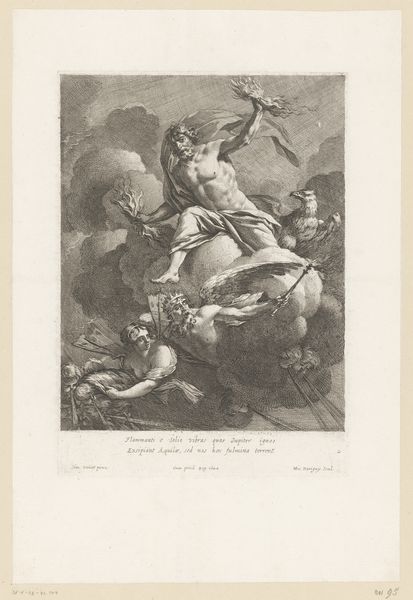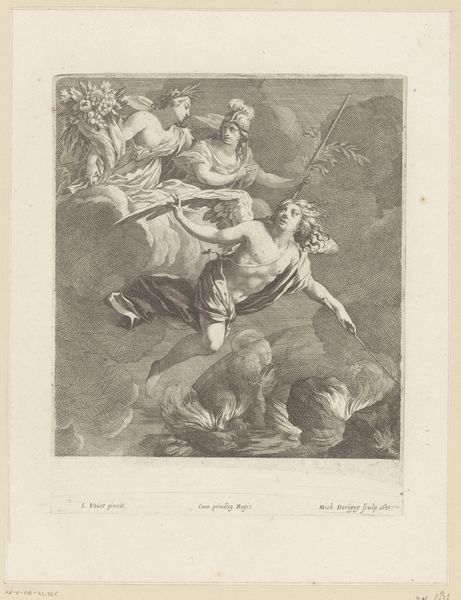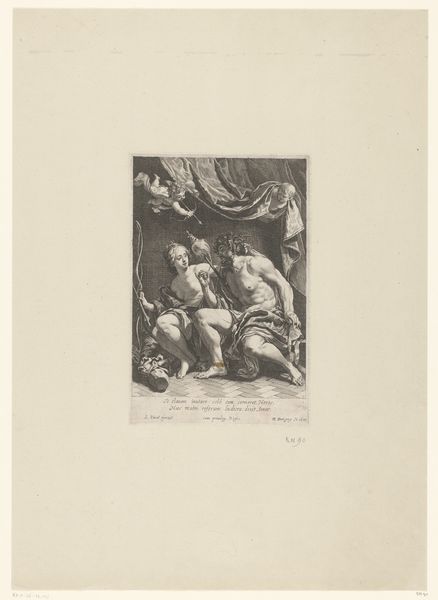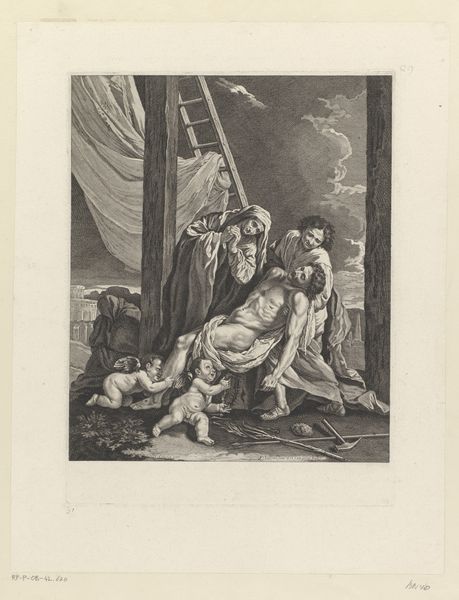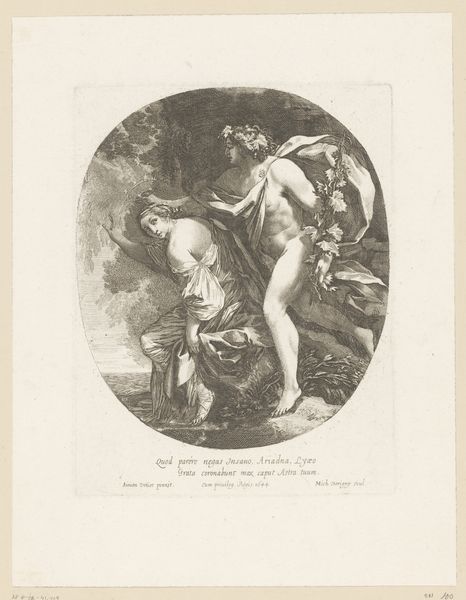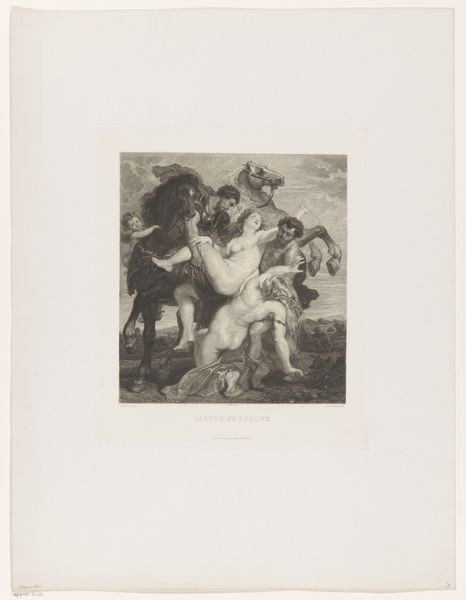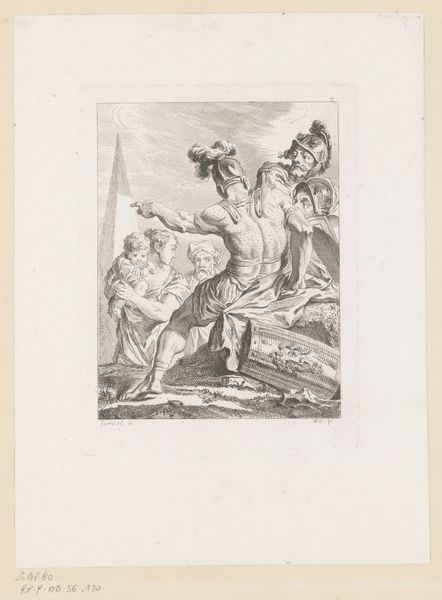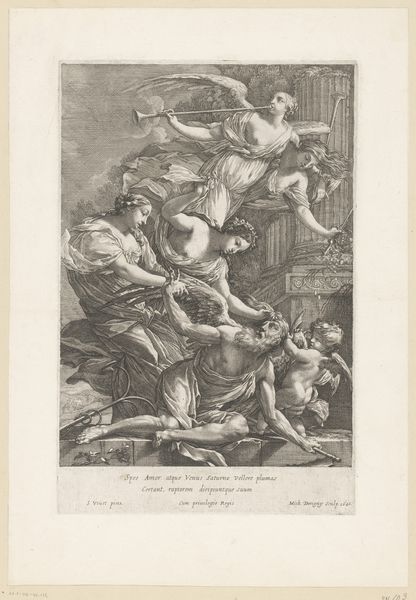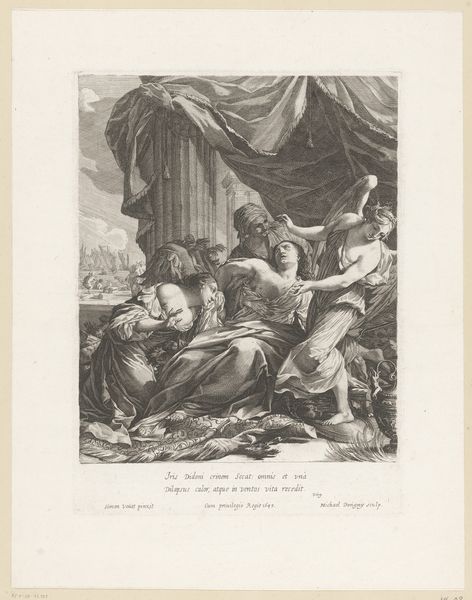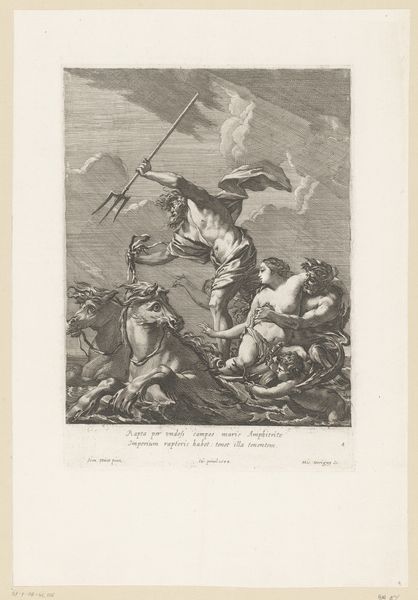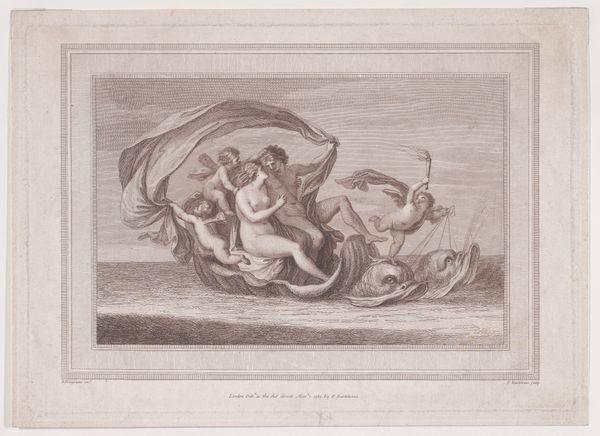
print, etching, engraving
#
allegory
#
baroque
# print
#
etching
#
old engraving style
#
figuration
#
history-painting
#
nude
#
engraving
Dimensions: height 288 mm, width 206 mm
Copyright: Rijks Museum: Open Domain
Curator: This engraving by Michel Dorigny from 1644 depicts Juno, queen of the gods in Roman mythology. Editor: She's really owning that cloud couch, isn’t she? A vibe of confident repose mixed with slightly bored amusement. Like, "Yeah, I rule Olympus, what else is new?" Curator: Dorigny's “Juno” speaks to the Baroque fascination with allegory, with the print showcasing not only classical deities but also ideals of power and beauty during a period of intense social stratification. The etching allows us to engage with the visual culture and its potential as political articulation. Editor: Right. All that power swirling around… those cascading folds and curves, everything's in motion, even the clouds. Though honestly, I'm kind of mesmerized by the cross-hatching; you can almost feel the scratching of the burin into the copper plate. It gives it this nervous energy that undercuts Juno's regal poise just a bit. And are those peacocks back there? Curator: Precisely! The peacock is Juno's attribute. This rendering provides a point to reflect on art's historical complicity in mythologizing power, examining the dynamics of race, gender, and class, even within a seemingly straightforward classical image. It challenges the narrative through deconstruction, acknowledging not only her beauty and divine status, but also the societal constraints and the patriarchy inherent in the artwork. Editor: Absolutely, those layers add depth! I mean, it's technically just lines on paper, but it gives the sense of the heavens opening up, releasing some cosmic feminine power... but maybe a kind that’s already trapped by expectations? Curator: The nudity is particularly relevant here; the work encourages us to question art's deployment to objectify, to delve into power dynamics embedded in classical representations of femininity, and to see that power is fluid. Editor: Hmm… Definitely food for thought! So, next time I’m feeling inadequate, I should maybe try reclining semi-nude on a cloud, preferably with peacocks and a heavenly spotlight. Thanks, Michel, and thanks, Juno, I needed that perspective shift! Curator: A perspective shift for understanding Juno in her epoch. A final thought perhaps: Art endures and our critical lens sharpens. It is by recognizing both past intentions and modern contexts that our experiences are profoundly enriched.
Comments
No comments
Be the first to comment and join the conversation on the ultimate creative platform.
